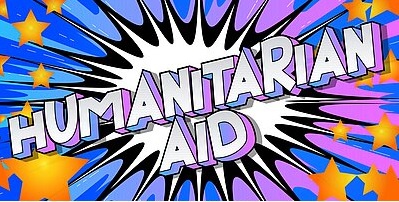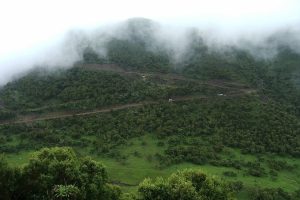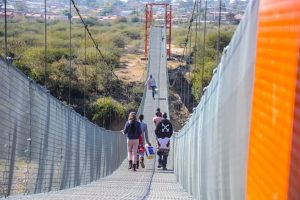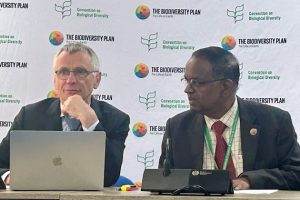
It is now obvious that TPLF leaders are poised to restart the war in northern Ethiopia, violating the humanitarian truce declared about 2 months ago. Such an action by the TPLF at a time when northern Ethiopia is still reeling from the war that has raged for several months and left deep socio-economic scars cannot be described as anything but madness.
The underlying real reason for TPLF’s urge to for breaking the truce is its dream of creating the improbable Great Tigray that stretches until Red Sea to the East and Sudan border to the West. TPLF relies on western powers, and their media outlets as well as international agencies in its attempt to cover up its ambitions. As a pretext, it tries to present to the media the issues surrounding adequate access to humanitarian supplies.
International humanitarian agencies are in effect sanctifying the TPLF’s policy of aggression by making baseless conclusions and releasing biased reports. If somebody who has little info about the Ethiopian situation reads the recent USAID Administrator report she presented to the US Congress, he /she would certainly get the wrong impression that the unfolding humanitarian crisis caused by the TPLF triggered conflict in Nov. 2020 occurs only in Tigray region. The report mentions the ‘Tigray’ half a dozen times but there is no single word like Afar or Amhara in the 13-page report. Neither Samantha Powers nor the members of the US Congress Foreign Affairs Committee did make a single mention of the plight of several million Afari, Amhara, and Tigrayan IDPs scattered in different sites located in the Afar and Amhara regions.
There is nothing wrong with the deep concern of USAID on the humanitarian situation in the Tigray region. One may question what is the hidden motive behind their overzealous involvement only focused on the Tigray situation. Is it not to build a groundwork for framing the Ethiopian government as needing forced intervention, and sanctioning it in support of the terrorist TPLF by pushing for hostile laws [like HR6600] undermining the sovereignty of Ethiopia? Why did USAID almost ignore the situation of the war-affected parts of the country other than Tigray? Is it because they had a special soft corner in their heart for the people of Tigray? Absolutely not!
If that were the case, the humanitarian agencies and western powers would have reacted fast and furiously to the naked crimes TPLF committed against the Tigray people using food as a political weapon. It is now no more news to hear that much of the humanitarian supplies [ food, fuel, cash] are used as logistical support to fuel TPLF’s war. USAID knows it but does not denounce it.
TPLF is denying access to humanitarian aid to families who refuse to send their children to join the TPLF army. Wallowing the humanitarian agencies, and western powers are only concerned about hitting their target of sending 500 aid trucks a week to Tigray. They do not seem to mind what happens to the humanitarian supply after it reached Tigray.
The international agencies and western powers did not appropriately denounce TPLF for conscripting child soldiers. They have turned blind eye to TV footage showing packets of children’s High Energy Biscuits [HEB] found in the pocket of TPLF fighters. They would not turn a deaf ear to the harrowing story of ethnic Tigrayans who made it to the Amhara regions after risking their lives to escape the tyrannical rule of TPLF in Tigray.
The USAID Chief in her report mentioned that she has firsthand information on the grave humanitarian information about the humanitarian crisis the conflict caused in Northern Ethiopia. “Since last appearing before this committee, I visited the Um Rakuba refugee camp in Sudan, where I met with victims of the conflict in Tigray and heard their heartbreaking stories of abuse and violence.”
But she did not at least care to mention the atrocities committed by the TPLF against the people of Afar and the Amhara regions, a fact that is documented by international human rights agents and even the western media. After all, if she got the nerve to go and visit the Tigrayan refugees in Sudan, what stopped her to do the same to IDPs in sites in Amhara and Afar, and listen to their stories about how they left their warm homes and lost their family members and ended up in the wilderness without food and shelter. Had Administrator Powers done that visit, she would not have dared to ignore the staggering humanitarian crisis in Amahara and Afar regions which is equally horrific and inhumane, if not worse.
In the report, she presented recently to the US Congress Subcommittee on State, Foreign Operations, and Related Programs (HACFO), Samantha, the top American Aid official, deliberately misinformed the US Congress members about the distribution of war-affected Ethiopian in need of aid. “Food insecurity projections from February 2022 to May 2022 show that up to a million people will face famine-like conditions in northern Ethiopia by June—700,000 of those in the Tigray Region.’ said Samantha in her report. What she is telling the Congress people was that 70% of Ethiopians severely affected by the war-induced humanitarian crisis in northern Ethiopia are in Tigray.
This is a far cry from the truth. After all statistical manipulations in the report of several humanitarian agencies are not an uncommon occurrence concerning the Ethiopian situation. The manipulation is intended to misinform the international community to create and nurture wrong opinions and facilitate the making of unjust decisions that affect Ethiopia’s national interests.
The recent official figures of the Amhara regional state show about 11.6 million people in the Amhara region need an emergency food aid. Out of these, 2.3 million people are IDPs, who fled their villages due to the conflict. Most of those IDPs, including women and children, do not even get emergency shelters. For instance, currently, over 25 thousand IDPs are crammed in the Jara IDPs site, at Dere-Roqa locality in Habru district of North Wollo Zone. Day by day the number of IDPs in the camp is rising. Sadly only 4,000 of the Jara IDPs population have got emergency shelter [plastic tents]. The majority of IDPs on the site take shelter under the tree, desperately trying to shield themselves and their kids from the daytime scorching heat and the freezing night. There is a serious shortage of humanitarian supplies on the site. Basic humanitarian supplies are scarce, leaving children and pregnant and lactating women without life-saving aid.
An IDP from Kobo and now residing in the Jara site carries in his arm a toddler said in a tearful voice: “ At least this child needs to be helped. children are suffering here. They need to get food when they want to eat. If there is any protector for children right out there, they have to come to save these children here who are dying of hunger and malnutrition. I have nothing more to say.”
While this is the truth on the ground, Samatha is trying to play politics with the food she pilled up in the several warehouses in Ethiopia. She was telling the US Congress that there was food, but there was no corridor to reach the starved Ethiopians in Northern Ethiopia. Under the cover of food aid, she is pushing for access to a corridor for Terrorist TPLF to bring in weapons and join hands with Ethiopia’s enemies.
If Samantha’s prime objective were saving people from famine and malnutrition, she would have made sure that the IDPs located at accessible sites in the government-controlled Amhara and Afar region would get adequate humanitarian supplies. Samantha needs to direct some of the food she hoarded in her warehouses to the desperate IDPs in areas like North Wollo, Wag-Hemra, in Keblati-Rasu Zone, and Semera IDP sites of the Afar region.
An OCHA report released a few days ago says: “The humanitarian situation continued to be dire with a high number of IDPs in need of support while the response and available resources which have been scaled up in the past weeks/months remain below what is needed for full coverage. A rapid nutrition assessment conducted in four IDP sites in Keblati-Rasu Zone/Zone 2 in mid-April revealed severe malnutrition amongst children under five years of age.”
BY SOLOMON WASSIHUN
THE ETHIOPIAN HERALD WEDNESDAY 25 MAY 2022





